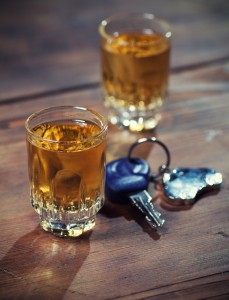How Various BAC Levels Affect your Driving

Alcohol-impaired motor vehicle crashes cost more than an estimated $37 billion annually. About one-third of the drunk driving arrests, crashes, deaths and injuries come from repeat offenders. All states have a legal limit of .08% BAC (blood alcohol concentration) for drivers over the age of 21 operating a motor vehicle. It is illegal for any driver under the age of 21 to have any level of alcohol in their system.
How does alcohol affect drivers at various BAC levels?
At a BAC of .02 a person begins to experience some loss of judgment, relaxation and altered mood, which can result in a decline in visual functions and ability to multi-task.
At a BAC of .05, psychomotor performance is significantly impaired causing slower eye movement and lower visual perception. Reaction time and information processing are negatively affected causing reduced coordination, ability to track moving objects, difficulty steering and reduced response to emergency situations.
At a BAC of .08, muscle coordination is significantly reduced making it harder to detect danger and judgment while impairing self-control, reasoning and memory. Reduced concentration, short-term memory loss, loss of speed control and reduced information processing capabilities are results of impairment at this stage.
At a BAC of above .08, impairment is significantly greater and it is very dangerous to be behind the wheel. Every person has a different reaction to alcohol and some may feel the same effects at different stages. Drunk driving is not just limited to cars but also other motor vehicles like boats, jet skis and snowmobiles.
If you have been drinking, it is important to use a designated driver, call a taxi or ride public transportation to your destination. Not only does drunk driving harm you, but also everyone else on the road.
 Fewer Cases Better Results
Fewer Cases Better Results 




